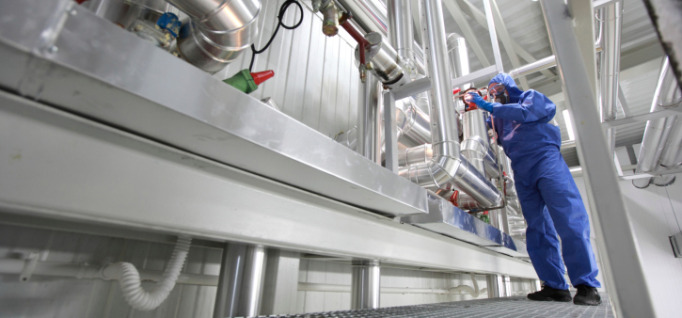I&C Academy Churns Out Skilled Trades Workers
By Reyna Gobel
October 7, 2014
Job training program succeeds by placing 100 percent of graduates into in-demand careers.
When administrators at Mississippi Gulf Coast Community College (MGCCC) consider launching a new job-training program, they start by asking local employers what skills are needed in the workforce.
In 2010, a conversation with representatives for Southern Company, a regional electrical power provider, led to the creation of a new instrumentation and control (I&C) program with an impressive 100-percent job placement rate.
In conversations with college officials, the power company estimated that it would need to replace up to 50 percent of workers with I&C experience over a five-year period. To offset the costs and resources needed to get the program off the ground, Jason Pugh, MGCCC’s vice president of instruction, worked with Southern and other power providers in the region to contribute resources, including funding, equipment, internships and post-graduate employment opportunities.
What is I&C? The curriculum, which provides technical training for jobs in a range of potential career fields, from the chemical industry to power generation to wastewater treatment, was designed by MGCCC faculty and an advisory board of industry professionals from Southern Company, Chevron, Shell, and other potential employers. Students who enroll in the project are exposed to several skills, including instrument systems communication, process simulations and computer graphic display interfaces.
Who’s enrolled? The I&C program focuses heavily on future employment, which means the number of students enrolled has to closely match the number of expected vacancies in the field. Regional employers such as Southern and others let the college know how many employees are needed. Enrollment is currently capped at 30 students per semester, explains Brock Clark, dean of Career & Technical, Workforce and Community Education at the Jackson County Campus. That number could go up or down depending on future employment trends.
Replicating the approach. MGCCC administrators say efforts to tie the number of open class seats to the number of projected jobs available upon graduation have proved successful. Jackson County Campus Vice President Carmen Walters says the college is taking a similar approach with its mechanical engineering program.
Looking to better match training to local economic needs? MGCCC administrators offer the following five tips for colleges seeking to establish similar training programs on campus.
- Talk to industry. Find out what the needs are. If you don’t have established workforce partners, seek them out.
- Establish student interest. It’s easy to get caught up in what business partners need. Before you launch a program, make sure it’s something that students are interested in.
- Think ahead about student placement. Know who is going to enroll in the program and create pathways that link education to career achievement.
- Ask companies to invest. Colleges can’t often afford the resource and equipment needed to build and staff these programs on their own. Industry partners have a vested interest in helping the college succeed. Don’t be afraid to ask for help, whether it’s in the form of cash, training, internships or some other means.
- Find the right knowledge base. Retired employees may be the best candidates to teach courses. Work with industry partners to identify mentors and educators and drive teaching and training for your program.
Does your college work with industry to meet the demands of the local labor market? Share your experiences with us in the Comments.











